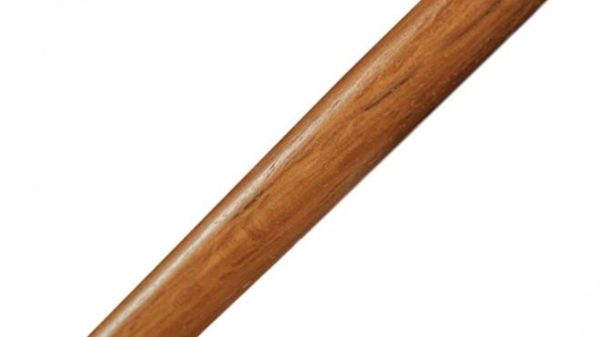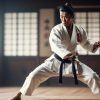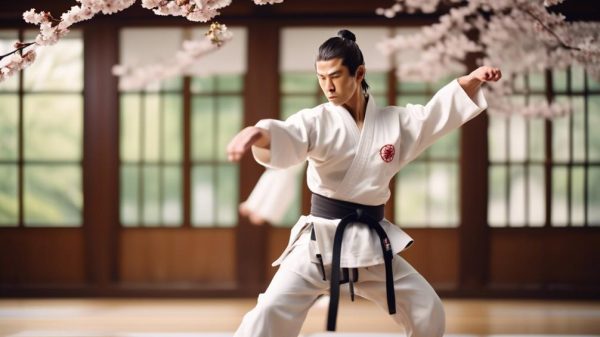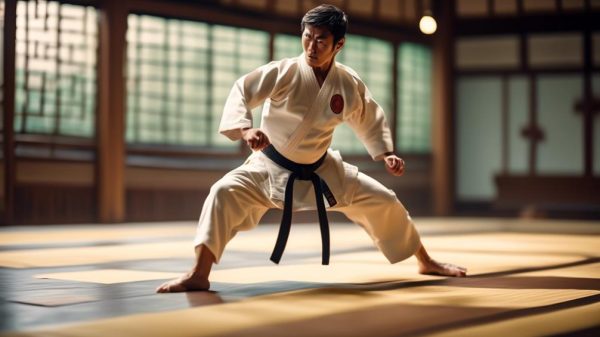Kendo is Japanese swordsmanship that came from ancient samurai warrior arts. Kendo students use bamboo swords and protective armor when they practice.
Unique practice routines called katas (forms) help kendoka master skills. Partners flow through choreographed movements together without actually striking each other.
These kendo dances teach proper ways to cut, slash, stab and strike during fights. Going through each motion with perfect timing, speed and balance takes great self-control.
Repeating katas ingrains stances, distancing, offensive attacks and defensive counters into kendo artists through muscle memory.
Mastering the artistic katas makes kendo warriors graceful and quick by building strength with discipline. Katas cultivate the essence of respectful Japanese sword arts.
Understanding Kendo Katas
Uncovering the intricacies of Kendo katas reveals that these precise sequences are more than just physical exercises. They represent a disciplined dance, refining your technique with each meticulously executed movement.
Each kata embodies the essence of Kendo, necessitating not only physical conditioning but also a sharpened focus and concentration. Accuracy is paramount, reflecting a deep understanding and mastery through regular, deliberate practice.
Power and speed are essential; your strikes must resonate with strength, and your movements must be swift, embodying the prowess of a trained martial arts instructor. However, without proper timing and rhythm, force alone falls short.
In Kendo kata, rhythm enhances strikes, weaving control and skill into a seamless display of martial prowess.
To pursue mastery, immerse yourself in the kata instructions (1-4) provided by the Japan Kendo Federation or seek additional guidance at reputable dojos such as the Norwalk Kendo Dojo.
Ensure the utilization of proper techniques as they form the cornerstone of true expertise. Study each Kendo Kata video with an unwavering eye—let them guide you toward precision. Remember, in the pursuit of Kendo excellence, every detail counts.
Fundamental Strikes Breakdown
Unlock the essence of Kendo proficiency by breaking down the fundamental strikes, where power, precision, and spirit converge. As you immerse yourself in the art of kendo kata, each technique becomes a testament to your dedication.
Every sweep of the sword embodies the martial tradition, honed through meticulous arts techniques and training.
Here are key strikes to refine:
- Men Strike: Move forward with the right foot and deliver a decisive cut to the head.
- Kote Strike: Target the wrist with swift precision, maintaining balance and control.
- Do Strike: Strike the torso side, where proper footwork ensures effectiveness.
- Tsuki Thrust: Direct the sword’s tip accurately to the throat, embodying the pinnacle of focus.
In your martial arts classes, your instructor will emphasize the importance of uniting body and spirit within each motion. The foot positions, timing, and kiai all serve to invigorate your strikes with an indomitable force.
Your journey in mastering these strikes isn’t merely about wielding a sword; it’s a path to understanding the martial essence, guided by a seasoned martial arts instructor.
Pursue excellence, and let each cut you deliver resonate with the legacy of Kendo.
Advanced Kata Sequences
Enhancing your Kendo skills goes beyond basic strikes. Advanced kata sequences push you to refine your technique, focusing on precision and speed.
These sequences aren’t just about going through the motions; they’re about honing the techniques and exercises that define your artistry in Kendo.
Each kata requires meticulous attention to detail, ensuring the proper technique is utilized while integrating power and grace.
As you step onto the practice mats, remember that these advanced katas are your path to mastery, demanding unwavering focus and discipline.
You must be relentless in your pursuit, supplementing the instruction given with personal dedication and relentless practice.
These kata sequences detail how the technique should evolve from basic forms to complex applications, pushing your limits and expanding your capabilities.
The rhythm, timing, and concentration required for these advanced katas are what separate the dedicated practitioner from the rest.
Embrace the challenge, and let the Kendo kata be your guide to achieving a higher level of proficiency and understanding in the martial arts. Your journey to mastery awaits.
Philosophical Aspects of Kendo
The practice of Kendo involves not only mastering the physical techniques but also embarking on a profound philosophical journey that shapes not just the body but also the mind and character.
The execution of Kendo kata is deeply rooted in tradition, demanding more than mere physical prowess to truly comprehend these techniques.
- Discipline and Respect: Each strike and parry in Kendo is an embodiment of discipline, requiring respect for both the art and one’s opponent.
- Mental Resilience: Focusing during Kendo practice extends beyond the dojo, imparting the ability to confront life’s obstacles with calmness.
- Connection to Bushido: The philosophical dimensions of Kendo pay tribute to the Bushido code, advocating honor and integrity in all facets of life.
- Spiritual Development: Through rigorous training, one not only hones skills but also nurtures inner strength and self-awareness.
To fully grasp these principles, it’s essential to seek guidance from an instructor who can provide thorough explanations and assist in rectifying errors.
Your training should serve to reinforce and complement the knowledge being imparted, ensuring that each lesson is appreciated with the gravity it deserves.
Trust in a martial arts instructor who values these philosophical foundations as much as the physical execution of Kendo kata.
Etiquette in Kata Practice
As you embark on the philosophical journey of Kendo, it’s crucial to recognize that etiquette in kata practice holds equal importance to your growth as the physical techniques.
Respect and courtesy form the core values of your training, deeply intertwined with the essence of Kendo kata. Each bow and every focused movement serves as a testament to your commitment.
Upon entering the practice area, it’s essential to remember that every action, from performing a proper bow (‘rei’) to maintaining silence, pays homage to the art’s heritage. It’s not solely about preventing injuries and ensuring the safe use of weapons; it’s about embodying the spirit of Kendo.
While instructional materials are valuable, their true essence comes to life under the guidance of a knowledgeable instructor.
Their explanation of techniques, coupled with the rituals of etiquette in kata practice, elevates your comprehension from theoretical to profound.
| Etiquette Aspect | Significance in Kata Practice |
|---|---|
| Proper Bowing (‘rei’) | Demonstrates respect and gratitude. |
| Focus and Discipline | Exhibits dedication and respect for the practice. |
| Instructor Guidance | Ensures precise technique and safe practice. |
Embrace these principles with passion and precision, and you will not only master the forms but also the soul of Kendo.
Frequently Asked Questions
How Many Kendo Katas Are There?
Kendo comprises 10 katas, each serving as a fundamental practice in Kendo, deeply rooted in tradition and carrying significant cultural value. These katas contribute to refining both your equipment handling skills and mental discipline.
How Many Katas Are There?
You are studying the historical significance and philosophy of kata to master your art. Through various kata progressions, you can improve mental discipline, perfect breathing control, and make use of essential equipment. Utilize available resources to maximize the benefits of your practice.
Why Is Nippon Kendo Kata Important?
Nippon Kendo Kata connects ancient wisdom with modern discipline, imparting essential principles for mastery. It offers a path to perfecting techniques, fostering appreciation for cultural heritage, and honing mental focus, culminating in a ritual of strategic thinking and precise training.
What Are the Kata Techniques?
Kata techniques involve precise training, fundamental footwork, and control of breathing. Mastery of bokken usage, posture, and synchronization practice are essential. Additionally, exploring kata variations aids in mental focus and spiritual discipline, tracing back to the origins of kata.









